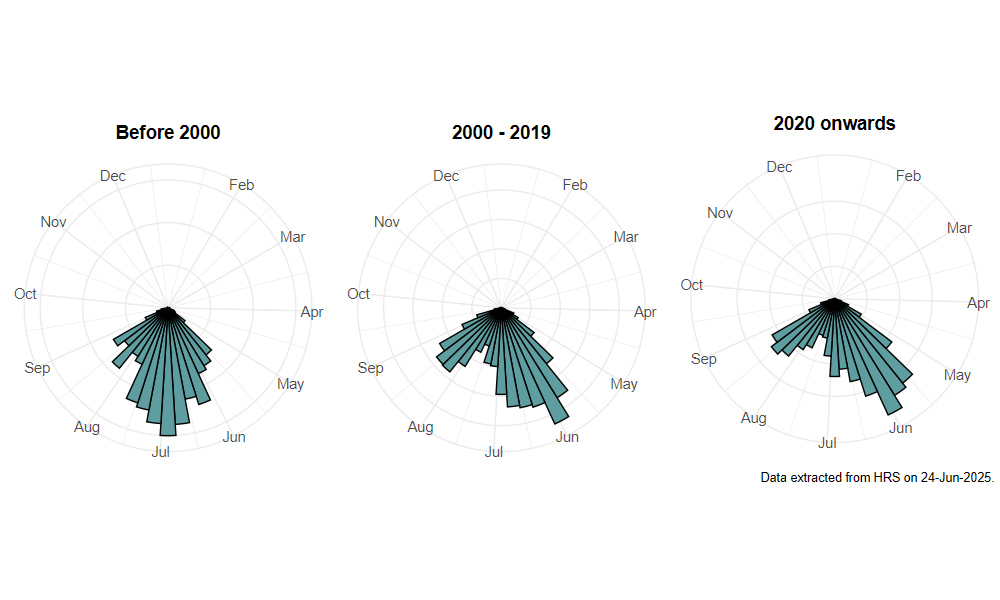Xanthogramma pedissequum (Harris, 1776)
Identification
Identification difficulty = 2. ![]()
![]() according to Ball & Morris, 20241
according to Ball & Morris, 20241
Biology
The larva has been found in the galleries of the black ant Lasius niger under a stone in a limestone quarry, in which the root aphid Forda formicaria was also present (Foster, 1987)2. Another record from a nest of the same ant species records the presence of a different root aphid, Trama sp. (Dixon, 1960)3. The species overwinters as a larva. It is found in flowery and grassy places including waste ground, disused railways, canal banks, gardens and woodland rides and edges. It does not show such a strong preference for calcareous localities as X. citrofasciatum, and there are a few records from acid grassland and wetlands.
Flight period
The following plots show the number of unique records per week excluding those reported to be of immature stages.

Distribution
Local and usually scarce. About three times as many records have been submitted to the recording scheme for this species than for X. citrofasciatum, these being concentrated in southern England south of a line from the Severn to the Wash, and in South Wales. There are scattered records north of this, but it must be regarded as rare in North Wales and northern England. There is a confirmed record from a shingle island in the River Tay in central Scotland.

Trends
The following plots show the Frescalo TFactor vs year and a map of the rescaled frequency (all records) for the species.
-
Ball, S., & Morris, R. (2024). Hoverflies of Britain and Ireland. WILDGuides (3rd ed.). Oxford: Princeton University Press. ↩
-
Foster, A. (1987). Xanthogramma pedissequum (Harris) (Dipt.: Syrphidae) bred from a Lasius niger (L.) (Hym. Formicidae) nest. Entomologist’s Record and Journal of Variation, 99, 44–45. ↩
-
Dixon, T. (1960). Key to and descriptions of the third instar larvae of some species of Syrphidae (Diptera) occurring in Britain. Transactions of the Royal Entomological Society of London, 112, 435–379. ↩